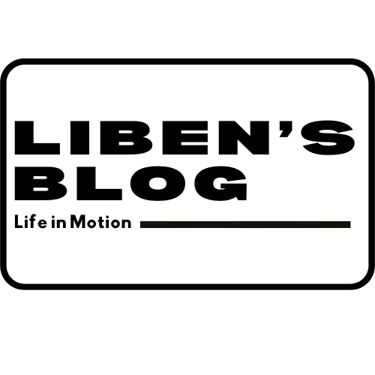Launching a Sustainable Permaculture Food Forest with Integrated Animal Husbandry in Nagaland: A Comprehensive Guide
Explore how to develop a thriving permaculture food forest over 5 acres in Bhandari, Nagaland. This detailed guide covers everything from plant and animal selection suitable for the local climate to financial insights. Discover best practices for integrating agroforestry and animal husbandry to achieve sustainability, boost community welfare, and ensure profitability. Perfect for environmental enthusiasts and prospective permaculture practitioners aiming to make a positive impact.
AGRO-FORESTRY
Dr. Emmanuel L Yanthan (MS OB/GYN)
4/25/20243 min read


Project Report: Integrated Permaculture Food Forest with Animal Husbandry in Nagaland
Introduction to Permaculture Principles
Permaculture is a system of agricultural and social design principles centered around simulating or directly utilizing the patterns and features observed in natural ecosystems. Key principles include:
Observe and Interact: By taking time to engage with nature we can design solutions that suit our particular situation.
Catch and Store Energy: By developing systems that collect resources when they are abundant, we can use them in times of need.
Obtain a yield: Ensure that you are getting truly useful rewards as part of the work that you are doing.
Apply Self-Regulation and Accept Feedback: We need to discourage inappropriate activity to ensure that systems can continue to function well.
Use and Value Renewable Resources and Services: Make the best use of nature’s abundance to reduce our consumptive behavior and dependence on non-renewable resources.
Produce No Waste: By valuing and making use of all the resources that are available to us, nothing goes to waste.
Design from Patterns to Details: By stepping back, we can observe patterns in nature and society. These can form the backbone of our designs, with the details filled in as we go.
Site Analysis: Climate and Soil
Bhandari-Merapani, located in Nagaland, features a subtropical climate with rich, varied soils primarily consisting of loamy and are well-drained, which is suitable for diverse agricultural activities. The area experiences heavy rainfall, and the temperatures vary moderately throughout the year.
Plant Selection and Layout Plan
Trees and Plants:
Fruit Trees: Orange, banana, guava, and lemon trees. Areca Nut (optional)
Fodder Plants: Napier grass, mulberry, and Subabul (for shoot and leaves).
Vegetables: Cabbage, chili peppers, tomatoes, and beans.
Timber Trees: Teak and bamboo (for construction and craft purposes).
Animal Husbandry Units:
Poultry: Chickens for eggs and meat.
Goats and Pigs: For meat and potentially for milk (goats).
Layout Plan
The food forest will be divided into several zones:
Core Zone: High-density planting of fruit trees with vegetable understory.
Buffer Zone: Timber and fodder plants surrounding the core zone.
Animal Zone: Adjacent to the buffer zone, with easy access for grazing on fodder and waste management integration.
Water Management Systems: Ponds and swales for irrigation and aquaculture.
Executive Summary
This project aims to establish a 5-acre permaculture food forest in Bhandari-Merapani, Wokha District, Nagaland. The initiative will integrate agroforestry, animal husbandry, fruit trees, fodder plants, and vegetable cultivation tailored to local climatic and soil conditions, benefiting the community both economically and environmentally. The food forest will serve as a sustainable model for agriculture and livestock management, aligning with permaculture principles to ensure productivity and ecological balance.
Objectives
To create a sustainable and profitable permaculture food forest.
To integrate animal husbandry to enhance soil fertility and revenue streams.
To provide organic produce to the local community, promoting health and sustainability.
To demonstrate a replicable model of integrated farming for other regions.
Project Description
Location and Climate
The project will be located in Bhandari Sub-division, featuring a subtropical climate suitable for diverse agricultural pursuits. The area receives ample rainfall and has fertile loamy soil conducive to a wide range of agricultural activities.
Project Components
Plantation: Cultivation of fruit trees, fodder plants, timber trees, and vegetables.
Animal Husbandry: Raising poultry, goats, and pigs.
Water Management: Implementation of ponds and swales for effective water conservation and irrigation.
Permaculture Principles
The design and operation of the food forest will adhere to permaculture principles such as energy catching, obtaining yields, and producing no waste, among others. This approach will ensure the sustainability and efficiency of the project.
Detailed Project Activities
Land Preparation
Clearing, soil testing, and initial soil preparation to enhance fertility.
Planting Strategy
Fruit Trees: Planting of orange, banana, guava, and lemon trees.
Fodder Plants: Establishment of Napier grass, mulberry, and bamboo.
Vegetables: Cultivation of cabbage, chili peppers, tomatoes, and beans.
Timber Trees: Planting of teak and additional bamboo.
Animal Husbandry
Setup for poultry, goats, and pigs, including shelters and rotational grazing systems.
Water Management
Construction of water conservation systems such as ponds and swales integrated with the landscape design.
Financial Plan
Initial Investment
Land Cost @20 lacs per Acre: ₹10,000,000
Land Preparation: ₹100,000
Plant Saplings: ₹150,000
Animal Purchase: ₹50,000
Infrastructure (Fencing, Tools, etc.): ₹200,000
Total Initial Investment: ₹10,500,000
Operational Costs (Monthly)
Labor: ₹10,000
Animal Feed and Maintenance: ₹5,000
Miscellaneous: ₹5,000
Total Monthly Expense: ₹20,000
Revenue Projections
Fruit Sales: ₹50,000 per month
Vegetable Sales: ₹20,000 per month
Poultry and Meat: ₹30,000 per month
Total Expected Monthly Revenue: ₹100,000 (post-maturity)
Sustainability and Impact
This project will not only provide financial returns but also promote ecological health, increase biodiversity, and improve soil conditions through integrated farming practices. It will serve as a model for sustainable agriculture in the region.
Conclusion
With a solid operational framework, a clear financial plan, and a commitment to sustainable practices, this permaculture project presents a viable and profitable investment opportunity that will benefit the local community and the environment.
NOTE: This Project can be implemented in any location within Nagaland with similar climatic condition and geography as Bhandari (Wokha). This plan can also be presented to government agencies, banks or investors to secure funding for the project, highlighting its sustainability, profitability, and benefits to the local community and environment.
